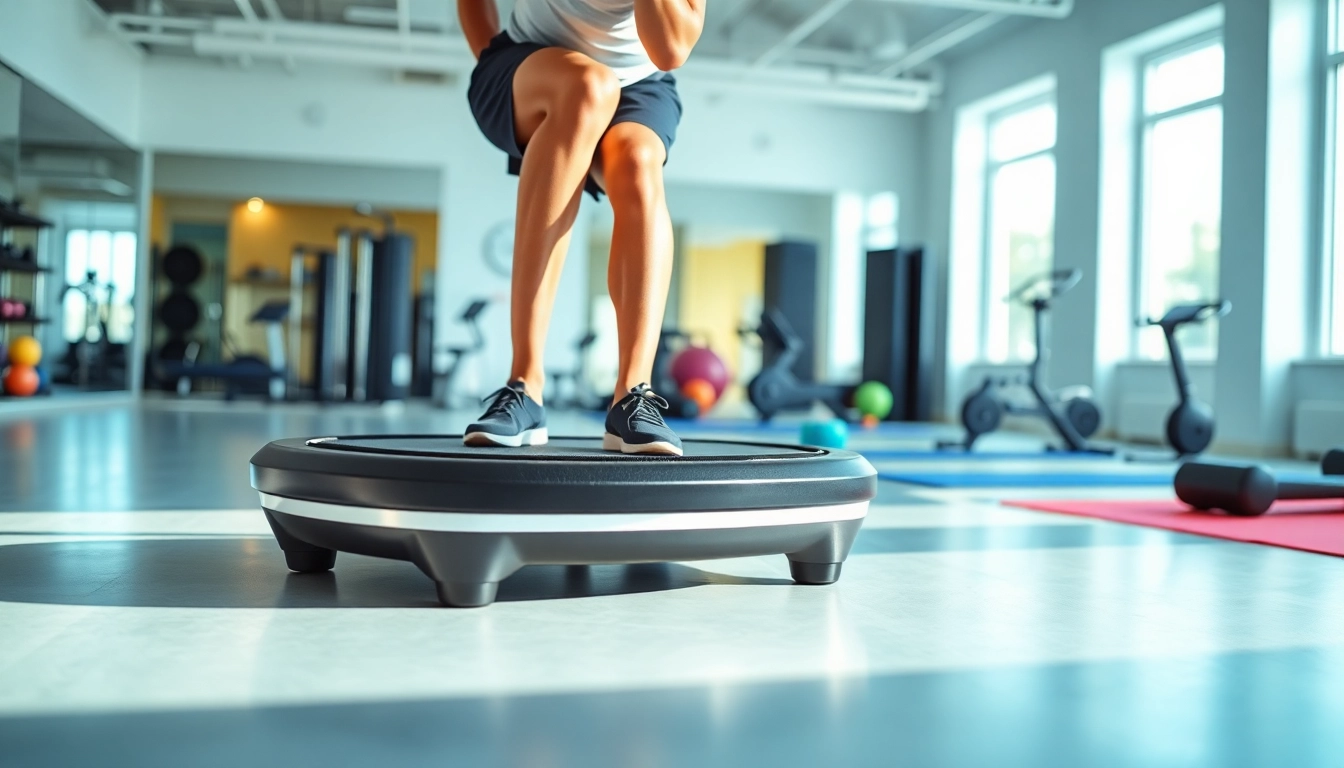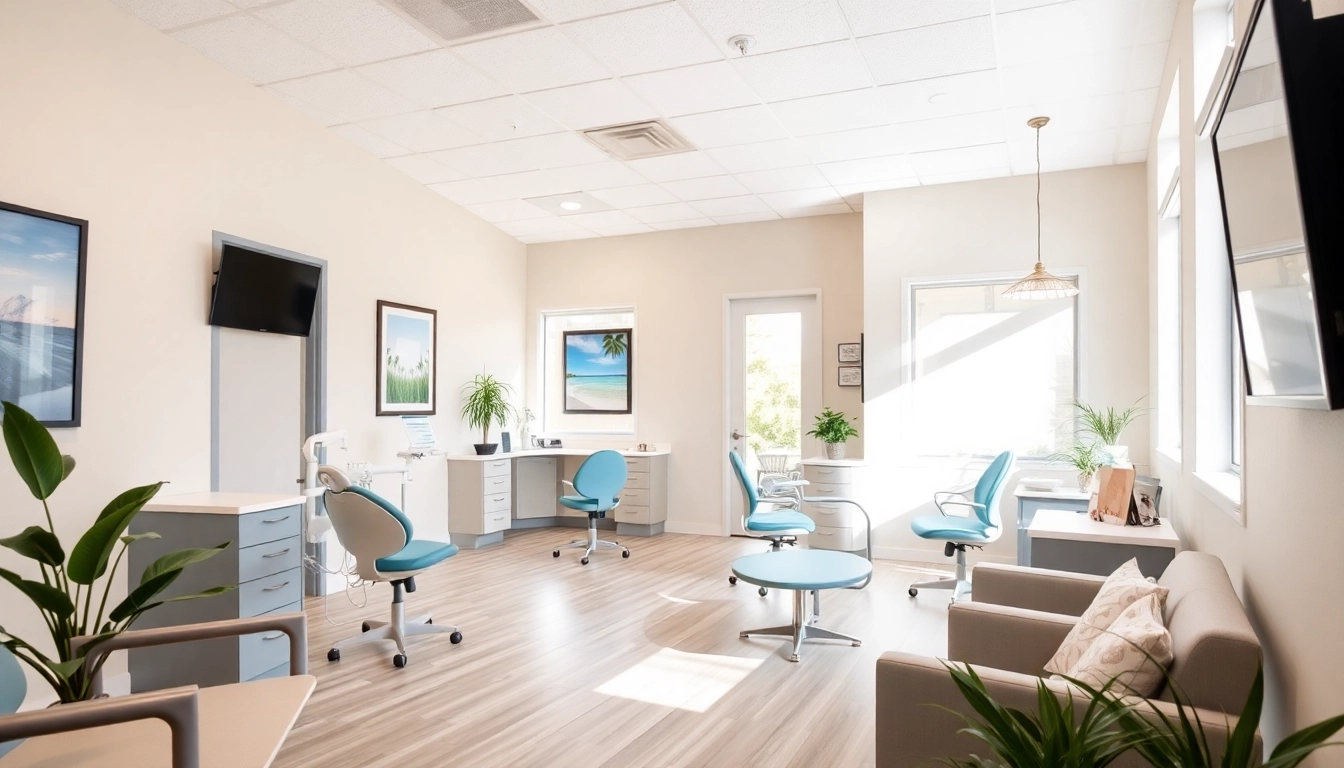What is Whole Body Vibration Therapy?
Whole body vibration therapy is a treatment approach that employs vibrating platforms to stimulate the body’s muscles and potentially enhance physical health. The therapy involves standing, sitting, or lying on a machine equipped with a vibrating platform. While the machine creates vibrations, it transmits energy to the body, causing the muscles to contract and relax multiple times each second. This unique modality has garnered attention for its potential benefits in fitness, rehabilitation, and overall wellness. To explore this innovative therapy further, you can discover more about whole body vibration therapy.
The Science Behind Whole Body Vibration Therapy
The scientific foundation of whole body vibration therapy rests in the way mechanical vibrations influence muscle behavior and physiological functions. Research has shown that vibrations generate reflexive muscle contractions that are akin to engaging in traditional physical exercises. These rapid muscle contractions can improve strength, coordination, and balance while potentially enhancing endurance.
Studies indicate that vibrations at specific frequencies can elicit considerable engagement of muscle fibers. This phenomenon boosts neuromuscular performance, cardiovascular fitness, and metabolic rates. The frequency of the vibrations, the duration of exposure, and the individual’s health status all play critical roles in the therapeutic effects experienced. Additionally, ongoing research explores the specific mechanisms through which vibrations affect muscle, bone density, and neurological functions, leading to a deeper understanding of this therapeutic approach.
How Whole Body Vibration Therapy Works
Whole body vibration therapy works primarily by delivering mechanical vibrations that stimulate various body systems. The vibrations, typically ranging from 20 to 50 Hz, can initiate involuntary muscle contractions. During a session, users may adopt different positions, such as standing, squatting, or resting on the machine, depending on their goals and comfort levels.
The process begins as the vibrating platform oscillates, generating a force that transmits through the body. This vibration stimulates muscle fibers, causing them to contract reflexively. Such contractions help enhance muscle strength, improve circulation, increase metabolism, and assist in relieving pain in certain cases. Over time, incorporating whole body vibration therapy into a regular fitness regimen can lead to improved muscle tone and increased overall strength and flexibility.
Common Devices Used in Whole Body Vibration Therapy
Several devices are commonly associated with whole body vibration therapy, each varying by design, mechanics, and intensity capabilities. The most typical platforms include:
- Vibration plates: These are the most widely used devices. They come equipped with oscillation or linear motion, affecting how vibrations travel through the body.
- Vertical vibration machines: Designed to produce vertical oscillations, these machines are effective in stimulating the body along a single axis, promoting specific muscle recruitment.
- Multi-directional platforms: These offer a combination of vibrations from multiple directions, providing a comprehensive physical stimulus that engages more muscle groups simultaneously.
The choice of device often depends on individual training goals, specific health conditions, or personal preference.
Benefits of Whole Body Vibration Therapy
Physical Health Benefits of Whole Body Vibration Therapy
Whole body vibration therapy offers a myriad of physical health benefits backed by scientific research. Some of the most notable benefits include:
- Improved muscle strength: The involuntary contractions induced by whole body vibration can lead to increased muscle strength and tone over time, making it an effective supplement to traditional resistance training.
- Enhanced flexibility: Regular use of vibration therapy can improve joint mobility and flexibility, allowing for greater range of motion in daily activities.
- Bone density improvement: Studies suggest that whole body vibration may positively impact bone density, which is particularly beneficial for preventing osteoporosis.
- Increased blood circulation: The mechanical stimulation promotes better blood flow, potentially aiding in recovery from injuries and supporting overall cardiovascular health.
- Weight management: Utilizing whole body vibration therapy can complement a weight loss regimen by increasing metabolic rates and assisting in calorie burning.
Impact on Mental Well-being and Stress Relief
The mental health benefits of whole body vibration therapy are gaining recognition as well. Engaging in this form of therapy can lead to improved mood, decreased stress levels, and enhanced relaxation. The vibrations can stimulate the production of endorphins, neurotransmitters known for their mood-boosting properties. This aspect makes whole body vibration therapy a potential adjunct treatment for anxieties and stress-related disorders.
Additionally, a calming vibration experience can foster a meditative state, helping to promote mental clarity and focus. The physical activity associated with whole body vibration is also linked to cognitive benefits, demonstrating improvements in concentration and memory through increased blood flow to the brain and the stimulation of various neurological pathways.
Whole Body Vibration Therapy for Rehabilitation
Whole body vibration therapy has emerged as a valuable rehabilitation tool for individuals recovering from injuries or surgeries. This form of therapy can support rehabilitation efforts in several ways:
- Reducing recovery time: The stimulation of muscle and connective tissues encourages healing processes and quicker recovery from injuries.
- Enhancing mobility: Vibration therapy can support regaining strength and mobility in affected areas while promoting overall body functionality.
- Improving balance and coordination: This therapy can focus on improving proprioception and balance, which are crucial for preventing falls during the recovery phase.
As a complement to traditional physical therapy, whole body vibration therapy can be integrated into rehabilitation protocols, providing a non-invasive option for many patients.
How to Incorporate Whole Body Vibration Therapy into Your Routine
Frequency and Duration Recommendations
Incorporating whole body vibration therapy into a fitness routine can be straightforward; however, optimizing its effectiveness requires careful consideration of frequency and duration. Recommendations typically suggest:
- Sessions of approximately 10 to 30 minutes, varying based on personal tolerance and fitness levels.
- Frequency of two to three times per week for general health maintenance and enhancement.
- Increased intensity and duration as one’s body adapts to the therapy over time.
Individuals should approach this therapy gradually, allowing the body to adjust and ensuring that it fits comfortably into their overall wellness strategy.
Safety Precautions for Whole Body Vibration Therapy
Although whole body vibration therapy can be beneficial, it is essential to observe safety precautions to minimize risks. Here are some recommendations:
- Consult a healthcare professional: Before beginning whole body vibration therapy, especially if you have existing health conditions (e.g., cardiovascular issues, recent surgeries), consult with a healthcare provider.
- Use equipment correctly: Familiarize yourself with how to use the equipment properly and adhere to the manufacturer’s guidelines regarding duration and intensity.
- Hydrate: Stay well-hydrated before and after sessions to support muscle health and recovery.
- Avoid overstimulation: Listen to your body. If discomfort occurs during use, reducing the duration or intensity is advisable.
By taking these precautions, individuals can safely reap the many benefits of whole body vibration therapy.
Example Workouts Utilizing Whole Body Vibration Therapy
Integrating whole body vibration therapy into a workout can be done through various exercises that utilize the vibrating platform. Here are some effective exercises:
- Squats: Stand on the vibrating platform with your feet shoulder-width apart and perform squats to engage the leg muscles effectively.
- Wall stands: Press your back against a wall while standing on the platform; this helps enhance stability while activating lower body muscles.
- Calf raises: Stand on the platform and lift your heels off the ground, working the calf muscles.
- Seated leg lifts: While seated on the platform, gradually lift each leg to engage core and leg muscles.
These exercises provide opportunities to maximize the physiological benefits offered by whole body vibration therapy, helping individuals enhance their fitness routines while enjoying the advantages of vibration.
Understanding the Risks and Limitations
Potential Side Effects of Whole Body Vibration Therapy
While many experience positive effects from whole body vibration therapy, some individuals may encounter side effects. These can include:
- Dizziness or lightheadedness, particularly for newcomers
- Muscle soreness resulting from intense muscle contractions
- Fatigue or exhaustion after extended sessions
If any side effects occur, it is advisable to reduce session length and intensity and gradually reintroduce therapy at a more comfortable level.
Who Should Avoid Whole Body Vibration Therapy?
While whole body vibration therapy can be beneficial, some individuals should exercise caution or avoid it altogether. These include individuals with:
- Pregnancy
- Recent fractures or surgeries
- Cardiovascular diseases or conditions
- Severe neurological conditions
- Acute inflammation or infections
A thorough consultation with a healthcare professional is essential before starting whole body vibration therapy, particularly for those in higher risk categories.
Evaluating the Effectiveness of Whole Body Vibration Therapy
Evaluating the effectiveness of whole body vibration therapy involves monitoring progress over time. Key performance metrics to consider include:
- Muscle strength and endurance improvements as measured by fitness assessments
- Range of motion and flexibility evaluations
- Cognitive and mental well-being assessments through questionnaires
- Recovery times for injuries and physical ailments
By focusing on these metrics, individuals can track their health and fitness journeys, determining the broader impacts of whole body vibration therapy on their personal goals.
Future Trends in Whole Body Vibration Therapy
Innovations in Vibration Therapy Technology
The future of whole body vibration therapy is promising, especially with ongoing innovations in technology. Emerging trends include:
- Smart platforms: New devices are being developed to integrate advanced sensors and feedback systems, enabling users to personalize their experiences based on real-time data.
- Portable devices: As technology advances, smaller, more accessible vibration devices are becoming available, making therapy more convenient for home use.
These advancements aim to increase user engagement, improve effectiveness, and integrate vibration therapy into everyday wellness practices for broader accessibility.
Integrating Whole Body Vibration Therapy with Other Treatments
The integration of whole body vibration therapy with other treatment modalities is a growing area of interest. This includes:
- Combining with traditional exercise: Whole body vibration can enhance traditional workout protocols, leading to increased benefits from both approaches.
- Pain management: When used alongside physical therapy or chiropractic care, vibration therapy may promote quicker healing and pain relief.
- Wellness programs: More wellness centers are incorporating vibration therapy into holistic health regimens, targeting various physical and mental health aspects.
These integrative approaches recognize whole body vibration therapy’s versatile role in promoting health and well-being.
Research and Developments in Whole Body Vibration Therapy
As interest in whole body vibration therapy increases, so does the body of research surrounding its applications and efficacy. Key areas of focus include:
- Investigating the long-term effects of whole body vibration therapy on specific populations, including athletes and the elderly.
- Studying the mechanisms by which vibrations influence muscle adaptation, recovery, and overall health.
- Exploring innovative applications in clinical treatments for chronic conditions, such as arthritis or osteoporosis.
As research continues to evolve, it will provide valuable insights, leading to more refined techniques, protocols, and a deeper understanding of whole body vibration therapy’s full potential.



